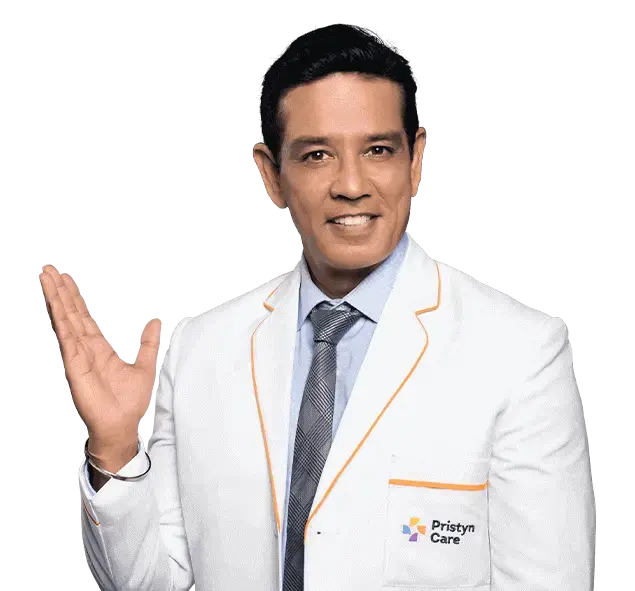
Select City
ESWL and Laser Lithotripsy are effective, minimally invasive methods for treating ureteral stones, ranging in size from 8-15 mm. ESWL uses shock waves to break up stones, while Ureteroscopic Holmium Laser Lithotripsy uses a laser to dissolve them. Let's understand them better in this content.
ESWL and Laser Lithotripsy are effective, minimally invasive methods for treating ureteral stones, ... Read More




Free Consultation

Free Cab Facility

No-Cost EMI

Support in Insurance Claim

1-day Hospitalization

USFDA-Approved Procedure
Choose Your City
It help us to find the best doctors near you.
Bangalore
Delhi
Hyderabad
Mumbai
Delhi
Gurgaon
Noida
Ahmedabad
Bangalore
ESWL, or Extracorporeal Shock Wave Lithotripsy, is a non-invasive procedure for treating kidney stones. Here are some key details to understand about ESWL:
In essence, ESWL offers a minimally invasive alternative to surgery when treating kidney stones. This well-established procedure proves effective for suitably chosen stone cases.

Fill details to get actual cost
Now, we’ll guide you through the steps involved in this procedure:
Laser Lithotripsy is a medical procedure used to treat kidney stones and other urinary tract stones. If you’re wondering how it works, here are the important aspects:
Here is a simplified overview of the laser lithotripsy procedure, broken down into preparation, treatment, and post-procedure stages:

Diet & Lifestyle Consultation

Post-Surgery Free Follow-Up

Free Cab Facility

24*7 Patient Support
ESWL, or Extracorporeal Shock Wave Lithotripsy, is often the first choice of treatment for smaller kidney stones under 2 cm in diameter. This non-invasive procedure is commonly indicated for:
While ESWL can be considered for larger stones, the success rates lower significantly and multiple sessions might be needed. It’s important to remember that several factors influence whether ESWL is performed, such as:
Therefore, ESWL isn’t a one-size-fits-all solution, but it may well be your first line of defence against smaller kidney stones.
Laser lithotripsy is a medical procedure your doctor might recommend when certain challenges with kidney stones arise. Here are some situations that may merit the use of laser lithotripsy:
Extracorporeal shock wave lithotripsy (ESWL) is a standout treatment for kidney stones, and it’s not hard to see why. Here are some of its key benefits:
Laser lithotripsy, a modern method to treat kidney stones, comes with numerous benefits. Let’s explore them:
After undergoing EWSL, it’s important to take certain steps to ensure a smooth recovery.
After undergoing Laser Lithotripsy, one can take these steps to ensure a smooth recovery:
| Characteristic | ESWL (Extracorporeal Shock Wave Lithotripsy) | Laser Lithotripsy |
|---|---|---|
| Stone-free rates | 92-97% | 92-97% |
| Effectiveness for stone composition | Less effective for cystine and certain calcium stones | Effective for all stone compositions |
| Procedure time | Shorter | Longer |
| Invasiveness | Non-invasive, no incisions | Minimally invasive, uses a small scope |
This procedure is preferred for larger stones over 1cm, stones resistant to ESWL, or stones causing severe obstruction
ESWL remains the first-line option for proximal ureteral stones due to lower cost and ease of performance.
Both procedures are typically outpatient treatments with patients returning home on the same day.
ESWL has a higher probability of causing renal colic and gross haematuria, whereas laser lithotripsy often leads to voiding symptoms.
ESWL is non-invasive, whereas laser lithotripsy is minimally invasive.
If we compare, laser lithotripsy may hold a slight advantage for single-session treatment.
Laser lithotripsy works effectively for all stone compositions, while ESWL is less effective for cystine and specific calcium stones.
Laser lithotripsy costs more compared to ESWL.
The complete stone passage in both ESWL and laser lithotripsy take several weeks for both.
Both are outpatient procedures done under anesthesia.
Nandan Seth
Recommends
I had a great experience with Pristyn Care for my kidney stone treatment. Doctors and medical staff made sure I understood everything about my condition and treatment options. They helped me to get total relief from kidney stones and live a healthy life.
Swaraj Bhattacharya
Recommends
I was so scared to have surgery for my kidney stones, because of the cut but Pristyn Care offered an advanced therapy which doesn’t involve any incision. The doctors were great, and the staff was so helpful. I recovered quickly and went back to my normal routine.
Shantanu Bharadwaj
Recommends
Pristyn Care provided personalized attention during my kidney stone treatment journey. They understood my individual needs and concerns, and took care of me in every possible way, making me feel valued as a patient.
Ramchandra Sarkar
Recommends
Pristyn care provides you with ultimate and effective kidney stone treatment. They take good care of you and are always there to solve your concerns.
Susheela Tagore
Recommends
Pristyn Care's adenoidectomy service was exceptional. The ENT specialist I consulted was caring and experienced, making me feel at ease throughout the entire process. They thoroughly explained the procedure and the benefits of adenoid removal. The surgery itself was smooth, and Pristyn Care's post-operative care and follow-ups were outstanding. Thanks to their expertise, my breathing has significantly improved, and I am grateful for their support.
Jayesh Khemka
Recommends
Managing kidney stones was challenging, but Pristyn Care's urologists were attentive and caring. They recommended a personalized treatment plan, and the support I received during the treatment process was commendable. Thanks to Pristyn Care, my kidney stone issue has been resolved, and I feel healthier.
.svg)
.svg)